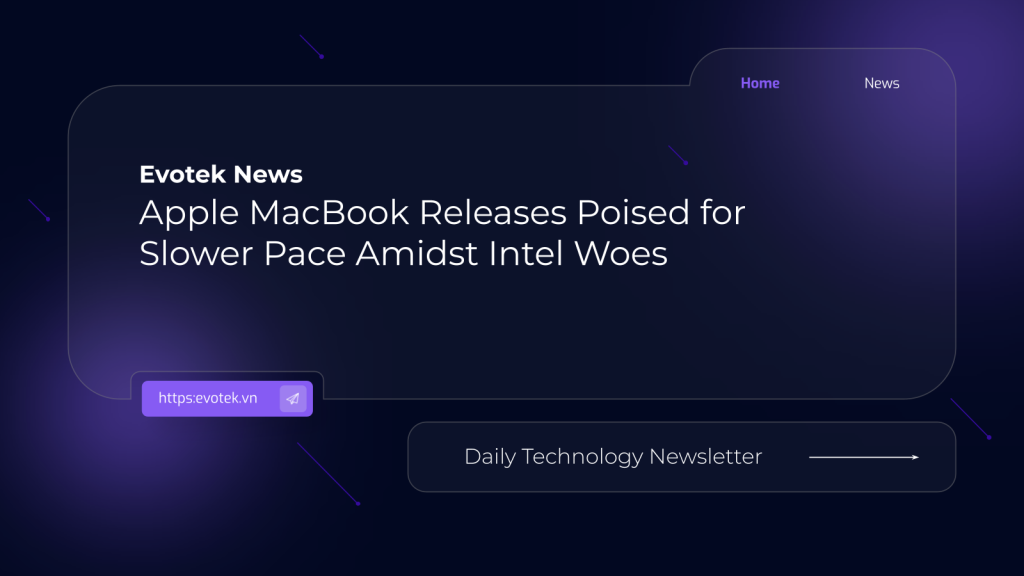The relentless pace of Silicon Valley often feels unsustainable, with technology companies racing to introduce new products annually. Recent reports from Intel, suggesting the chip giant is in a precarious position, could signal a significant shift for one of its former key partners: Apple. This development might empower Apple to re-evaluate its traditionally aggressive annual MacBook release schedule.
MacBook Pro Delay Expected into 2026
According to reliable Apple analyst Mark Gurman of Bloomberg, consumers shouldn’t expect a new MacBook Pro in 2025. These anticipated models, potentially featuring the next-generation M5 chip, are now rumored for a release in the first half of 2026. Despite the delay, Gurman indicates that these M5 MacBook Pros will likely retain the familiar design introduced in 2021, potentially disappointing those hoping for a significant aesthetic refresh. The highly anticipated OLED display technology, promising superior contrast and vibrant colors, appears to be pushed back further, possibly until 2027.
Precedent and Broader Product Timelines
This potential shift in the MacBook release cycle isn’t without precedent. Apple has previously adjusted its Mac calendar, as seen with the M2 MacBook Pro in January 2023, followed by the M3 models in October of the same year. While MacBook timelines appear flexible, Apple’s other product lines seem to be adhering to their usual schedules.
Gurman’s sources suggest new iPad Air models, powered by M3 chips, could launch as early as March or April 2026, alongside an update for the base iPad. The high-end iPad Pro might see an M5 chip upgrade by October 2026. Furthermore, the iPhone lineup, including the upcoming iPhone 17e and the flagship iPhone 17 (expected with iOS 26 in the fall), is reportedly on track. Apple Watch upgrades and a potentially more comfortable Vision Pro headset are also anticipated.
Apple Silicon Dominance vs. Design Stagnation
Since transitioning from Intel CPUs to its proprietary ARM-based M-series chips in 2020, Apple has enjoyed considerable success with its Mac line. The current M4 chips continue to set benchmarks, often surpassing competitors from Intel, AMD, and Qualcomm in raw performance. However, despite this internal innovation, the external design and core features of MacBook Air and Pro models have remained largely unchanged for several years. This visual and functional consistency, including displays, keyboards, and the controversial webcam notch, provides minimal incentive for users of recent M-series Macs to upgrade annually. With Apple discontinuing support for older Intel-based Macs, the focus shifts to whether newer M-series models offer compelling enough reasons for existing users to make the jump.
Intel’s Challenges and Strategic Reset
Intel’s current predicament stems in part from being outmaneuvered in the burgeoning AI chip market, where Nvidia has established dominant leadership. This strategic misstep, among other challenges, reportedly contributed to the departure of former CEO Pat Gelsinger. Now under the leadership of Lip-Bu Tan, Intel faces a candid internal assessment. Tan has reportedly informed employees that the company is no longer among the top 10 semiconductor firms, a stark contrast to its position decades ago. Leaked internal communications, reported by The Oregonian, quote Tan describing the path to recovery as a “marathon,” emphasizing the necessity for Intel to become leaner and more adaptable to regain competitiveness. The company is reportedly undergoing significant workforce reductions across various divisions, with further cuts potentially on the horizon.
Implications for Consumers and Revenue Growth
While some argue that a slower product release cycle, focused on substantial innovation, would ultimately benefit consumers, Gurman suggests Apple’s revised timing might be strategically aimed at achieving “more consistent revenue growth.” Recent declines in Mac sales could be a factor. However, simply adjusting the release schedule without delivering significant design or feature overhauls might not be enough to entice users to upgrade, especially when successive models offer minimal differentiation. The true test for Apple will be whether these extended intervals translate into genuinely innovative products that justify the wait and encourage consumer adoption.

 日本語
日本語 한국어
한국어 Tiếng Việt
Tiếng Việt 简体中文
简体中文